Workshop program
Technology enhanced learning
Start Time: 1300hrs (onsite registration starting 1200hrs)
Introduction, review of basic concepts, pre-reading and pre-workshop assignment
Coffee break: 1500 - 1530hrs
Participants developing own teaching blog, discussion
End Time: 1730hrs
Pre-conference workshop on "Technology enhanced learning"
The aim of this workshop will be to review key ideas in eLearning or Technology enhanced learning (TeL). A simple / free tool and platform of a blog will be presented as an illustration of one method to not only assist teachers to transfer current slides used for lectures for use in online teaching and learning, but also to illustrate the use of a blog as a platform to build an online hyperlinked educational repository. The workshop will be supported by online articles for pre-reading, with online resources to assist workshop participants to develop their own pilot teaching blog or website. These materials, together with content to be presented during the workshop, will be posted on the workshop blog on the following weblink
Additional information can be reviewed on the blog for a main conference symposium on TeL on the following weblink
Message to the workshop participants from the workshop faculty:
Please sign up for a Google Blogger account before coming to the workshop (the websites below show you how to do this), and bring along a copy of a PowerPoint presentation you have recently given, or intend to give, as well as the individual slides of this PowerPoint presentation exported as individual JPEG images loaded onto a folder accessible by the tablet or laptop you bring along with you to the workshop. All the slides in the PowerPoint presentation should be ready to be shared on the internet, i.e. the content should have been created by you, you own the copyright or have permission to use the content, you have correctly attributed the source of content you are referring to, and the content should comply with local regulations regarding privacy and confidentiality, and intellectual property use/attribution.
Start your Google blog before coming to the workshop (follow the "how to" instructions from Google and other websites below), and upload the JPEG images of your presentation onto your blog.
You can continue to work on and refine your blog during and after the workshop.
Starting before, during, and soon after the workshop, we invite participants to share some information about who they are, their educational background, current teaching setting, how they hope to use technology to enhance their teaching, key messages they took away from the workshop (including from their pre-reading and pre-workshop preparation and preliminary steps starting their teaching blog), as well share the link of their draft teaching blog - all of this as a post on the online "Padlet" wall below, embedded within this workshop blog (Padlet is an interactive digital wall, which is on a private space on Padlet.com, and is not searchable on Google - you are able to write, edit and delete your own posts, without needing to login (by just double clicking or double tapping on the Padlet wall, or clicking the circled red + button bottom right of the Padlet wall), as long as you use the same mobile or desktop device; even though this platform works with all mobile and desktop devices, you will probably find using a laptop/workstation or tablet the easiest way to write and edit your posts on this website. You might also op to use initials, and omit specifying your institutional affiliation, in order to further anonymise your Padlet posts, as this workshop blog is available for open access).
Please start a post on the Padlet wall within the blog before the workshop. You can refine this during and after the workshop on the same post, as long as you use the same device.
Sharing your background, and teaching site will enable us to potentially continue to have an online discussion after the workshop on the Padlet wall. You can write, and edit your post on the Padlet wall by double tapping or double clicking on the space; or by going directly to the link below the Padlet wall. As long as you use the same device, you can continue to add to, edit or delete your post at any time. I have organised the flow of the posted messages on the Padlet wall so that the latest post is always at the top. This will enable you to find earlier messages and posts.
We encourage you to actively participate in the workshop, by undertaking the pre-workshop preparation, and workshop activities. What we take away from any educational activity - key ideas that we make a note of, and new things we are able to do - are arguably the most valuable outcomes of any educational and training session. "
The design of this workshop is based on a recent workshop on the same topic at CenMED, NUS (see workshop blog on following website http://telatcenmed.blogspot.sg/)
_________________
We will have an opening short presentation by Dr Aria Kekalih, who is sharing his presentation slides in the section below:
The method and process to share these slides is described in the recently published article below, and will be described further during the workshop. We will also explore how to use an embedded Padlet online writing and posting "wall", described in another recently published letter to the editor below.
"...combining an embedded online ‘‘graffiti wall’’ with a blog for use before, during and after the face to face session ..... ....... encourages students to actively and publicly engage with the learning material (on the blog), and also gives visibility of the teaching and educational process to students and their teachers."
above from
Goh, P.S., Sandars, J. An innovative approach to digitally flip the classroom by using an online "graffiti wall" with a blog. Medical Teacher. 2016 Aug;38(8):858. Epub 2016 Jul 14.
"Technology enhanced learning or eLearning allows educators to expand access to educational content, promotes engagement with students and makes it easier for students to access educational material at a time, place and pace which suits them. The challenge for educators beginning their eLearning journey is to decide where to start, which includes the choice of an eLearning tool and platform. This article will share one educator's decision making process, and experience using blogs as a flexible and versatile integrated eLearning tool and platform. Apart from being a cost effective/free tool and platform, blogs offer the possibility of creating a hyperlinked indexed content repository, for both created and curated educational material; as well as a distribution and engagement tool and platform. Incorporating pedagogically sound activities and educational practices into a blog promote a structured templated teaching process, which can be reproduced. Moving from undergraduate to postgraduate training, educational blogs supported by a comprehensive online case-based repository offer the possibility of training beyond competency towards proficiency and expert level performance through a process of deliberate practice. By documenting educational content and the student engagement and learning process, as well as feedback and personal reflection of educational sessions, blogs can also form the basis for a teaching portfolio, and provide evidence and data of scholarly teaching and educational scholarship. Looking into the future, having a collection of readily accessible indexed hyperlinked teaching material offers the potential to do on the spot teaching with illustrative material called up onto smart surfaces, and displayed on holographic interfaces."
Above abstract from
Goh PS. Using a blog as an integrated eLearning tool and platform. Med Teach. 2016 Jun;38(6):628-9.
[2015 Nov 11:1-2. Epub ahead of print]
__________________
Practical tips in formulating an e learning strategy and developing an e-learning program from Poh-Sun Goh
slide above and below from
An Introduction to Medical Teaching (edited by Kathyn Huggett and William Jefferies, through Google Books)
Reflect on how Bloom's taxonomy and Miller's pyramid might apply to learning continuum map from Poh-Sun Goh
(above image screenshot of Padlet wall workspace on link below, which contains embedded links and attribution to source material)
The quest for a unifying single layered "3D" graphic to use during med ed faculty development
http://www.bbc.com/news/business-37649892
http://www.oecd.org/edu/education-at-a-glance-19991487.htm
http://www.bbc.com/news/business-37649892
http://www.oecd.org/edu/education-at-a-glance-19991487.htm
One strategy to utilise material from a comprehensive indexed digital case based and educational repository by using an educational blog:website to support clinical residency training de Poh-Sun Goh
http://www.ncbi.nlm.nih.gov/pubmed/26982639
https://www.smartsparrow.com/2016/07/01/enabling-active-learning-through-technology/
https://www.smartsparrow.com/2016/07/01/enabling-active-learning-through-technology/
Goh, P.S. A series of reflections on eLearning, traditional and blended learning. MedEdPublish. 2016 Oct; 5(3), Paper No:19. Epub 2016 Oct 14. http://dx.doi.org/10.15694/mep.2016.000105
The following links below review some basics of instructional design which can be applied to eLearning or Technology enhanced learning:
“Above image reproduced by permission of the publisher, © 2012 by tpack.org”
Pre-workshop reading/browsing:
Please review the online resources above and below before the workshop. This should take approximately 3 to 4 hours.
1. Ellaway R, Masters K. AMEE Guide 32: e-Learning in medical education Part 1:
Learning, teaching and assessment. Med Teach. 2008 Jun;30(5):455-73. doi:
10.1080/01421590802108331. PubMed PMID: 18576185.
https://www.ncbi.nlm.nih.gov/pubmed/18576185
Masters K, Ellaway R. e-Learning in medical education Guide 32 Part 2:
Technology, management and design. Med Teach. 2008 Jun;30(5):474-89. doi:
10.1080/01421590802108349. PubMed PMID: 18576186.
https://www.ncbi.nlm.nih.gov/pubmed/18576186
2. eLearning in clinical teaching
http://www.faculty.londondeanery.ac.uk/e-learning/e-learning-in-clinical-teaching-1
(eLearning module)
http://www.faculty.londondeanery.ac.uk/other-resources/files/BJHM_article%2012_%20e-learning.pdf
Ian Doherty, Judy McKimm
British Journal of Hospital Medicine, January 2010, Vol 71, No 1
3. What do we mean by web‐based learning? A systematic review of the variability of interventions
http://scholar.google.com/citations?view_op=view_citation&hl=en&user=RbXpT6kAAAAJ&citation_for_view=RbXpT6kAAAAJ:IWHjjKOFINEC
DA Cook, S Garside, AJ Levinson, DM Dupras, VM Montori
Medical education 44 (8), 765-774
2010
4. Instructional methods and cognitive and learning styles in web‐based learning: report of two randomised trials
http://scholar.google.com/citations?view_op=view_citation&hl=en&user=RbXpT6kAAAAJ&cstart=20&citation_for_view=RbXpT6kAAAAJ:Se3iqnhoufwC
DA Cook, MH Gelula, DM Dupras, A Schwartz
Medical education 41 (9), 897-905
2007
5. Time and learning efficiency in Internet-based learning: a systematic review and meta-analysis
http://scholar.google.com/citations?view_op=view_citation&hl=en&user=RbXpT6kAAAAJ&cstart=20&citation_for_view=RbXpT6kAAAAJ:HDshCWvjkbEC
DA Cook, AJ Levinson, S Garside
Advances in health sciences education 15 (5), 755-770
2010
6. Computer animations in medical education: a critical literature review
http://scholar.google.com/citations?view_op=view_citation&hl=en&user=RbXpT6kAAAAJ&cstart=20&citation_for_view=RbXpT6kAAAAJ:ULOm3_A8WrAC
JG Ruiz, DA Cook, AJ Levinson
Medical education 43 (9), 838-846
2009
7. Preparing for the changing role of instructional technologies in medical education
http://scholar.google.com/citations?view_op=view_citation&hl=en&user=RbXpT6kAAAAJ&cstart=20&citation_for_view=RbXpT6kAAAAJ:iH-uZ7U-co4C
BR Robin, SG McNeil, DA Cook, KL Agarwal, GR Singhal
Academic Medicine 86 (4), 435-439
2011
Poh-Sun Goh
MBBS(Melb), FRCR(UK), FAMS(Singapore), MHPE(Maastricht)
Associate Professor and Senior Consultant, Department of Diagnostic Radiology, National University Hospital, and National University of Singapore
Short Biography:
Dr Goh is a clinical radiologist and educational scholar. He has an intense passion for eLearning or Technology enhanced learning (TeL); and has systematically developed this interest since 2002, through work as a critical practitioner (through the continuum of undergraduate and postgraduate to lifelong education and training settings), and educational scholar. He has presented papers and symposia on eLearning at both APMEC and AMEE since 2003 and 2004; published articles and reflection pieces; developed and presented workshops, and been an invited speaker on eLearning / TeL at local and international medical education conferences.



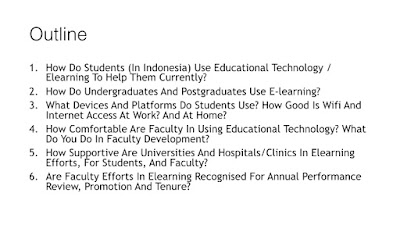


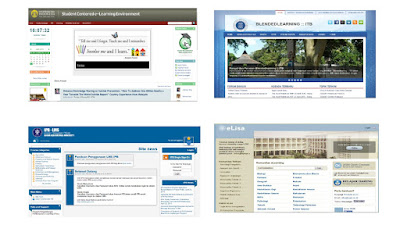





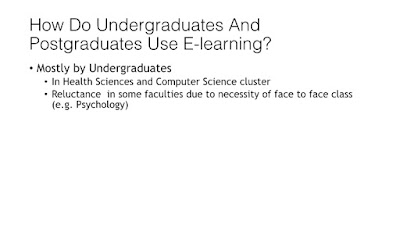





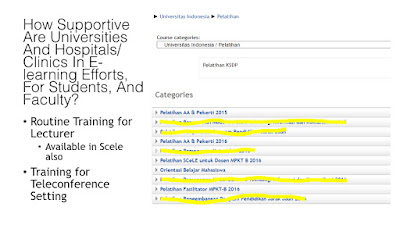


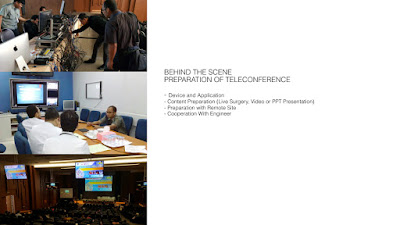

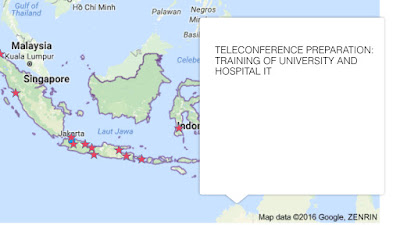

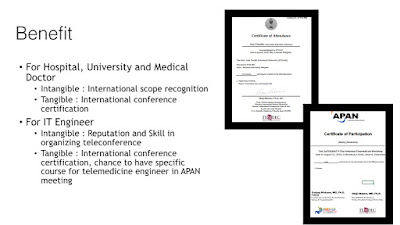































Always look forward for such nice post & finally I got you. Really very impressive post & glad to read this. Good luck & keep writing such awesome content. Best content & valuable as well. Thanks for sharing this content.
ReplyDeleteWeb Development Company in Greater Noida
Software development company In Greater noida
CMS and ED
CMSED
Homoeopathic treatment for Psoriasis in greater noida
You made some nice points there. I looked on the internet for the subject matter and found most individuals will agree with your site. Can you review my blogs and give some tips regarding them.
ReplyDeletebuy ws-c3560cx-12pc-s catalyst compact switch, poe- 12 x 10/100/1000 ethernet ports, 2 sfp&2ge uplinks- data ip base – managed, fast delivery in dubai.
Thanks for the content. KeenTeQ is one of the top SIRA-approved CCTV company in Dubai and the UAE. We have licensed engineers and skilled experts working for us as CCTV security system installer in Dubai.
ReplyDelete